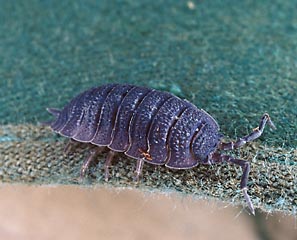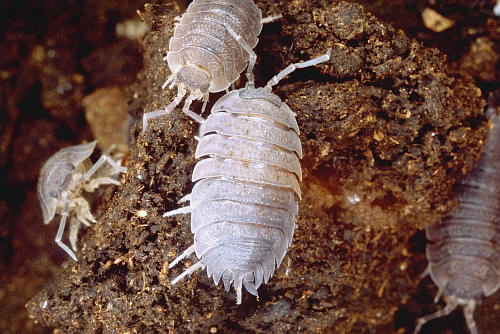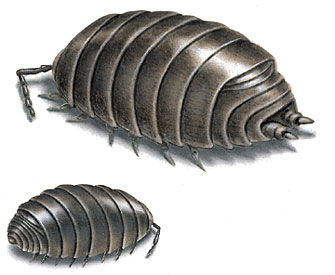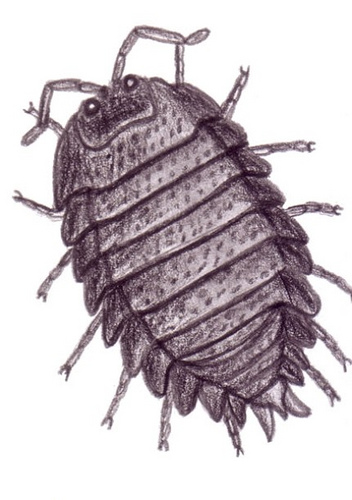EUROPEAN
SOWBUG
Oniscus asellus

Sowbugs are considered beneficial because they are effective decomposers. Sowbugs like to live in compost and eat dead vegetation, including rotting wood. They feed primarily on dead plant and animal matter and this is what makes them beneficial in nature. They are very effective decomposers and can be one of the most important parts of a compost heap.
Sowbugs make their homes in dark, damp places, like in your backyard under wood or rocks and in compost heaps. They also love living in thick, tangled woods, especially around fallen trees. Sowbugs sometimes crawl through spaces in the foundations of houses or through basement windows. They can survive quite well if the basement of a house is wet or damp. When people find these creatures in their basements, it is probably because the basement is damp and there is rotting wood. They do damage to the house because they chew on the wood. Even though sowbugs are considered beneficial in nature, they can cause problems when they get into a house.
Sowbugs do not bite humans and are not poisonous.
Sowbugs are not really bugs. They are fat bodied crustaceans and they have gills for breathing . Their closest relatives are things like fresh water shrimp, crabs, crayfish and lobsters. Just like their relatives, sowbugs have gills that are located along the lower surface of their abdomens (fish and other animals that live in water also have gills). Sowbugs must keep their gills moist. They do this by moving along slowly grazing on damp, decaying vegetation.
Sowbugs have seven pairs
of legs (14 legs all together), which is also different than most insects (most insects have
three pairs of legs). This is because Sowbugs are NOT insects. They are
"crustaceans" who are related to lobsters and crabs. The oval shape of sowbugs, their grayish color and their fourteen legs
make them different from almost any other
creature. Adults grow to be about 15 mm long (about 1/2 inch).
Sowbugs live all over the United States and North America, but they are
not a native species. Sowbugs were introduced from Europe. They are dormant in the winter. But, when the
ground thaws in the spring, they become active and stay active until the first hard frost.

Sowbugs have a hard outer shell, just like many of the crustaceans who are their relatives

The Gills of a Sowbug are found on their underside on the lower surface of their abdomen
